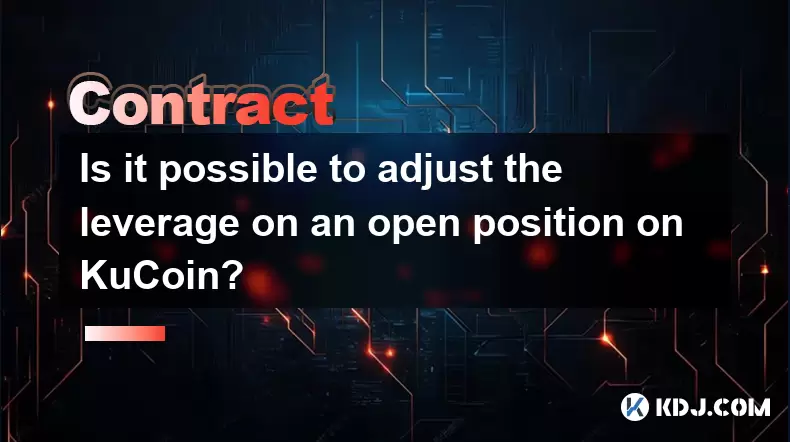-
 Bitcoin
Bitcoin $119000
-2.21% -
 Ethereum
Ethereum $4315
1.01% -
 XRP
XRP $3.151
-3.11% -
 Tether USDt
Tether USDt $0.0000
0.00% -
 BNB
BNB $808.5
-0.71% -
 Solana
Solana $175.8
-4.21% -
 USDC
USDC $0.9999
0.00% -
 Dogecoin
Dogecoin $0.2250
-3.92% -
 TRON
TRON $0.3469
1.77% -
 Cardano
Cardano $0.7818
-3.81% -
 Chainlink
Chainlink $21.47
-2.10% -
 Hyperliquid
Hyperliquid $43.30
-6.81% -
 Stellar
Stellar $0.4370
-2.84% -
 Sui
Sui $3.682
-4.40% -
 Bitcoin Cash
Bitcoin Cash $590.8
2.67% -
 Hedera
Hedera $0.2484
-5.20% -
 Ethena USDe
Ethena USDe $1.001
0.00% -
 Avalanche
Avalanche $23.10
-4.29% -
 Litecoin
Litecoin $119.2
-3.96% -
 Toncoin
Toncoin $3.409
0.90% -
 UNUS SED LEO
UNUS SED LEO $9.016
-1.29% -
 Shiba Inu
Shiba Inu $0.00001304
-3.82% -
 Uniswap
Uniswap $11.18
1.33% -
 Polkadot
Polkadot $3.913
-3.51% -
 Cronos
Cronos $0.1672
-3.08% -
 Dai
Dai $1.000
0.02% -
 Ethena
Ethena $0.7899
-4.70% -
 Bitget Token
Bitget Token $4.400
-1.23% -
 Pepe
Pepe $0.00001132
-5.93% -
 Monero
Monero $257.9
-6.44%
How to perform leveraged operations on Bitcoin contracts?
By leveraging a reputable cryptocurrency exchange with appropriate trading fees and adequate customer support, traders can access leveraged trading options on Bitcoin contracts, enabling them to amplify potential profits while mitigating risks effectively.
Dec 16, 2024 at 10:40 am

How to Perform Leveraged Operations on Bitcoin Contracts
Introduction
Leveraged trading allows traders to amplify their potential profits by borrowing additional funds from the exchange. This can be a powerful tool for maximizing returns, but it also carries significant risks.
In this guide, we will explore the steps involved in performing leveraged operations on Bitcoin contracts, including:
- Selecting a cryptocurrency exchange
- Choosing a trading strategy
- Determining the leverage ratio
- Placing a trade
- Managing risk
Step 1: Selecting a Cryptocurrency Exchange
The first step is to select a reputable cryptocurrency exchange that offers leverage trading on Bitcoin contracts. Not all exchanges offer leveraged trading, and those that do may have different terms and conditions.
Key Considerations:
- Exchange Reputation: Choose an exchange with a solid reputation for security and reliability.
- Leverage Options: Ensure that the exchange offers the leverage ratio that aligns with your trading strategy.
- Trading Fees: Compare the trading fees of different exchanges to minimize your costs.
- Customer Support: Consider the quality of customer support in case you encounter any issues.
Step 2: Choosing a Trading Strategy
Before you trade, it's essential to develop a trading strategy. This will guide your decision-making process and help you manage risk.
Popular Trading Strategies:
- Trend Following: Identify the general trend of the market and trade in the direction of the trend.
- Scalping: Make frequent, small trades on short timeframes to accumulate small profits.
- Range Trading: Trade within a defined price range, taking profits when the price reaches the boundaries.
- Arbitrage: Take advantage of price discrepancies between different exchanges to make risk-free profits.
Step 3: Determining the Leverage Ratio
The leverage ratio is the amount of funds you borrow from the exchange. A higher leverage ratio increases your potential profits but also expands your risk.
Leverage Ratios:
- 2x-5x: Suitable for experienced traders looking to amplify modest profits.
- 10x-25x: High-risk leverage ratios that can lead to substantial profits or losses.
- 50x-100x: Extreme leverage ratios best reserved for professional traders with specialized risk management strategies.
Step 4: Placing a Trade
Once you have selected a trading strategy and leverage ratio, you can place a trade. Most exchanges use a standardized order form that includes the following options:
- Order Type: Choose between market orders (executed immediately) and limit orders (executed at a specific price).
- Buy/Sell: Specify whether you want to buy (long) or sell (short) a Bitcoin contract.
- Quantity: Enter the number of Bitcoin contracts you want to trade.
- Leverage: Select the desired leverage ratio.
Step 5: Managing Risk
Leveraged trading carries significant risk, and proper risk management is crucial.
Risk Management Techniques:
- Stop-Loss Orders: Place orders that automatically close your trade when the price reaches a predetermined level to limit potential losses.
- Take-Profit Orders: Set orders to automatically take profits when the price reaches a desired target.
- Hedging: Use opposite trades to reduce risk in volatile market conditions.
- Trailing Stop-Losses: Adjust stop-loss orders as the price moves in your favor to protect profits.
Additional Considerations:
- Margin Requirements: Be aware of the margin requirements for leveraged trades, as they may vary depending on the exchange and leverage ratio.
- Market Volatility: Leverage amplifies both profits and losses, so it's crucial to monitor market volatility and adjust your strategy accordingly.
- Emotional Control: Avoid making impulsive decisions based on emotions. Stick to your trading plan and manage your risk effectively.
Conclusion
Leveraged trading can be a powerful tool for amplifying profits, but it also comes with significant risks. By following the steps outlined in this guide and adhering to sound risk management principles, traders can increase their chances of successful leveraged operations on Bitcoin contracts.
Disclaimer:info@kdj.com
The information provided is not trading advice. kdj.com does not assume any responsibility for any investments made based on the information provided in this article. Cryptocurrencies are highly volatile and it is highly recommended that you invest with caution after thorough research!
If you believe that the content used on this website infringes your copyright, please contact us immediately (info@kdj.com) and we will delete it promptly.
- PumpFun (PUMP) Price: Riding the Meme Coin Wave or Facing a Wipeout?
- 2025-08-12 16:50:12
- Arctic Pablo Coin: Meme Coin Growth Redefined?
- 2025-08-12 16:50:12
- Ether ETFs Surge: Inflows and Bull Signs Point to $4K ETH?
- 2025-08-12 16:30:12
- Bitcoin, Crypto Market, and CPI Anticipation: A New York Minute on Volatility
- 2025-08-12 16:30:12
- Bitcoin, CPI, and Market Fears: Navigating the Crypto Landscape
- 2025-08-12 15:10:13
- BTC Traders Eye ETH Targets as CPI Looms: A New York Minute
- 2025-08-12 15:10:13
Related knowledge

Is it possible to adjust the leverage on an open position on KuCoin?
Aug 09,2025 at 08:21pm
Understanding Leverage in KuCoin Futures TradingLeverage in KuCoin Futures allows traders to amplify their exposure to price movements by borrowing fu...

What cryptocurrencies are supported as collateral on KuCoin Futures?
Aug 11,2025 at 04:21am
Overview of KuCoin Futures and Collateral MechanismKuCoin Futures is a derivatives trading platform that allows users to trade perpetual and delivery ...

What is the difference between realized and unrealized PNL on KuCoin?
Aug 09,2025 at 01:49am
Understanding Realized and Unrealized PNL on KuCoinWhen trading on KuCoin, especially in futures and perpetual contracts, understanding the distinctio...

How does KuCoin Futures compare against Binance Futures in terms of features?
Aug 09,2025 at 03:22am
Trading Interface and User ExperienceThe trading interface is a critical component when comparing KuCoin Futures and Binance Futures, as it directly i...

How do funding fees on KuCoin Futures affect my overall profit?
Aug 09,2025 at 08:22am
Understanding Funding Fees on KuCoin FuturesFunding fees on KuCoin Futures are periodic payments exchanged between long and short position holders to ...

What is the distinction between mark price and last price on KuCoin?
Aug 08,2025 at 01:58pm
Understanding the Basics of Price in Cryptocurrency TradingIn cryptocurrency exchanges like KuCoin, two key price indicators frequently appear on trad...

Is it possible to adjust the leverage on an open position on KuCoin?
Aug 09,2025 at 08:21pm
Understanding Leverage in KuCoin Futures TradingLeverage in KuCoin Futures allows traders to amplify their exposure to price movements by borrowing fu...

What cryptocurrencies are supported as collateral on KuCoin Futures?
Aug 11,2025 at 04:21am
Overview of KuCoin Futures and Collateral MechanismKuCoin Futures is a derivatives trading platform that allows users to trade perpetual and delivery ...

What is the difference between realized and unrealized PNL on KuCoin?
Aug 09,2025 at 01:49am
Understanding Realized and Unrealized PNL on KuCoinWhen trading on KuCoin, especially in futures and perpetual contracts, understanding the distinctio...

How does KuCoin Futures compare against Binance Futures in terms of features?
Aug 09,2025 at 03:22am
Trading Interface and User ExperienceThe trading interface is a critical component when comparing KuCoin Futures and Binance Futures, as it directly i...

How do funding fees on KuCoin Futures affect my overall profit?
Aug 09,2025 at 08:22am
Understanding Funding Fees on KuCoin FuturesFunding fees on KuCoin Futures are periodic payments exchanged between long and short position holders to ...

What is the distinction between mark price and last price on KuCoin?
Aug 08,2025 at 01:58pm
Understanding the Basics of Price in Cryptocurrency TradingIn cryptocurrency exchanges like KuCoin, two key price indicators frequently appear on trad...
See all articles

























































































